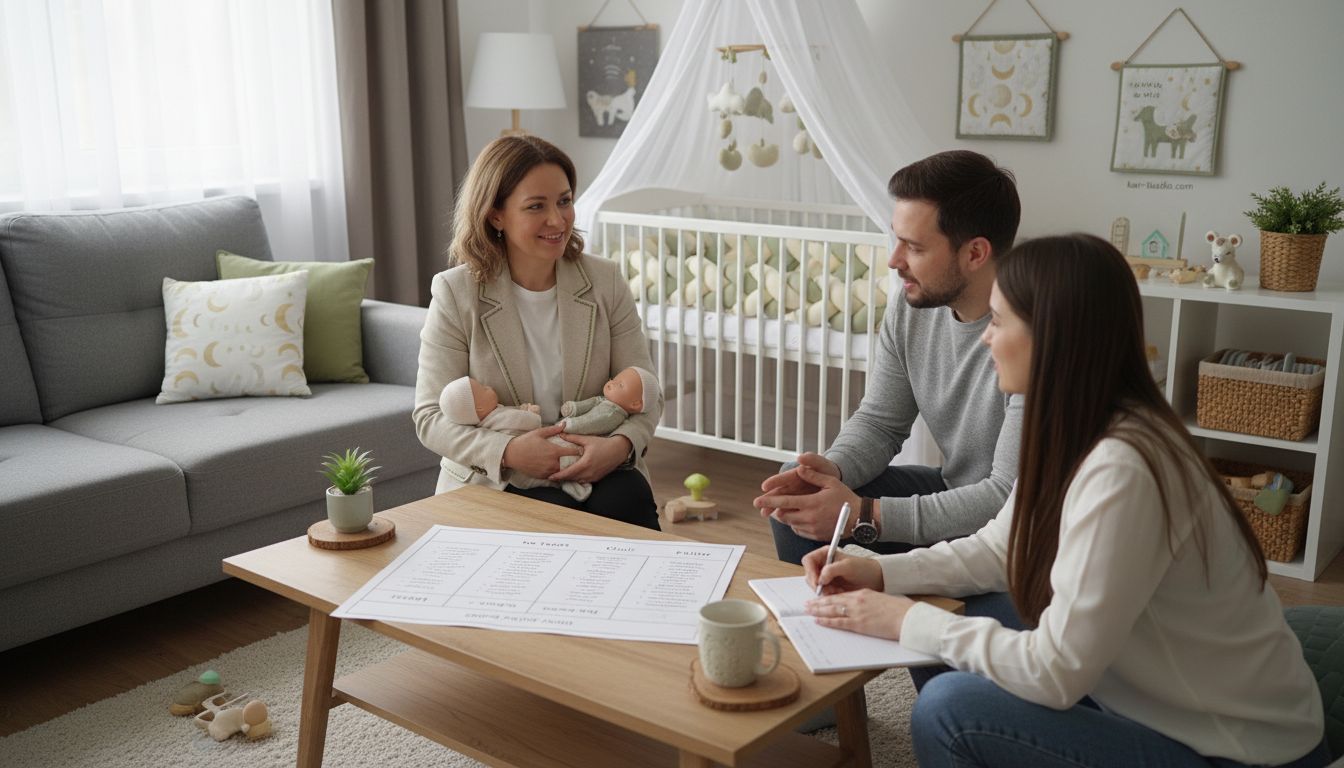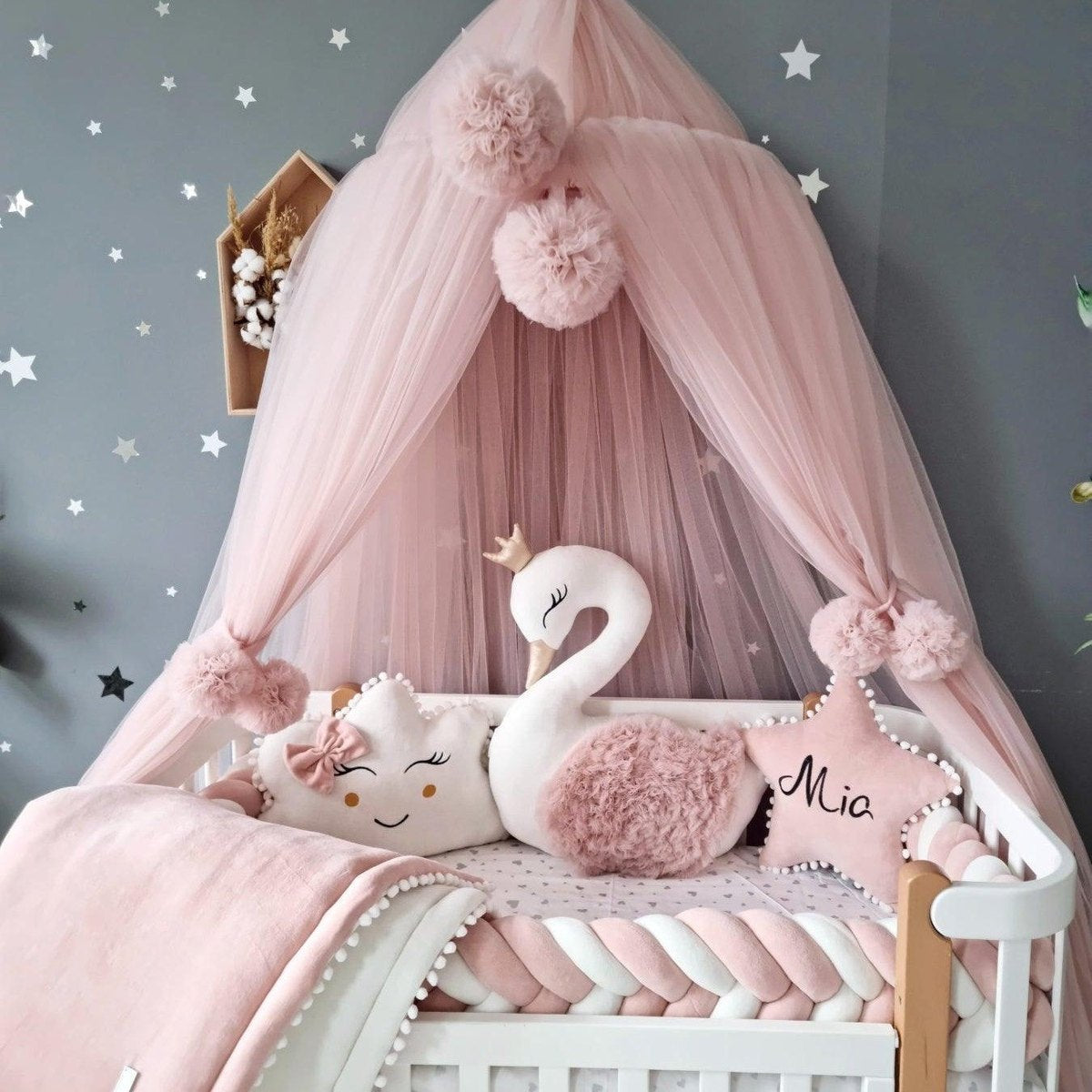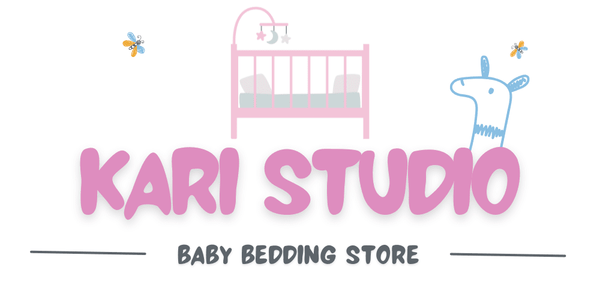Did you know that up to 94% of sleep training studies report multiple positive impacts for babies and families? Many parents worry about myths surrounding sleep training, but recent research shows that gentle, structured bedtime routines can support healthy child development. Understanding what sleep training really involves, and separating fact from fiction, brings clarity and confidence to creating restful nights for both babies and parents.
Table of Contents
- Defining Sleep Training And Common Myths
- Popular Sleep Training Methods Explained
- Pros And Cons Of Each Approach
- Step-By-Step Sleep Training Tips
- Safety Guidelines And Age Recommendations
- Frequently Asked Sleep Training Questions
- Supporting Better Sleep With Kari Studio Products
Key Takeaways
| Point | Details |
|---|---|
| Sleep Training Defined | Sleep training helps babies develop independent sleep habits through self-soothing and consistent bedtime routines. |
| Debunking Myths | Common myths include misconceptions about ignoring needs and emotional harm; research supports that gentle methods can be effective. |
| Choosing a Method | Various sleep training methods exist, with parents encouraged to select one that matches their style and their baby’s temperament. |
| Safety Guidelines | Initiate sleep training when babies are 4-6 months old; ensure a safe sleep environment and monitor for distress. |
Defining Sleep Training and Common Myths
Sleep training is a strategic approach parents use to help babies develop healthy independent sleep habits. According to CMH, it involves teaching your baby to self-soothe and establishing consistent bedtime routines that promote more restful nights for both parents and children.
Contrary to popular misconceptions, sleep training is not about leaving your baby to cry indefinitely. NPR highlights research from Dr. Harriet Hiscock indicating that scientific evidence does not support fears about long-term emotional harm from sleep training methods.
Common myths about sleep training often stem from misunderstandings about infant development and parental anxiety. Here are some key misconceptions:
- Myth 1: Sleep training means completely ignoring your baby’s needs
- Myth 2: All sleep training involves extensive crying
- Myth 3: Sleep training will permanently damage the parent-child attachment
- Myth 4: Babies will eventually “just learn” to sleep without guidance
In reality, sleep training is a nuanced process that respects your baby’s developmental stages while teaching critical self-soothing skills. When done compassionately and consistently, it can help establish healthy sleep patterns that benefit the entire family. Learn more about gentle sleep training approaches in our comprehensive guide.
Popular Sleep Training Methods Explained
Sleep training encompasses several approaches, each designed to help babies develop independent sleep skills. CMH emphasizes that parents can choose a method aligning with their personal parenting philosophy, with consistency being the most crucial factor.
Here are the most popular sleep training methods, each with unique characteristics:
![]()
Here’s a comparison of the main sleep training methods:
| Method | Approach Style | Parental Involvement | Typical Timeline |
|---|---|---|---|
| Ferber | Structured Timed checks |
Moderate | 1-2 weeks |
| No Tears | Gentle Minimal crying |
High | 2-4 weeks |
| Chair | Gradual Visual support |
High Gradually reduced |
2-3 weeks |
| Fading | Flexible Familiar routines |
Moderate Progressively less |
2-4 weeks |
- Ferber Method (Graduated Extinction)
- Involves short, progressive waiting periods before comforting
- Teaches babies to self-soothe
- Requires parents to gradually increase time between check-ins
- No Tears Method
- Gentle approach focusing on gradual changes
- Minimizes direct crying
- Emphasizes consistent bedtime routines
- Chair Method
- Parent sits near crib, moving further away each night
- Provides visual reassurance
- Gradually reduces direct parental presence
- Fading Method
- Slowly reduces parental intervention
- Involves existing sleep associations
- Transitions baby towards independent sleeping
Mayflower highlights that regardless of chosen method, patience and consistency remain paramount. Parents should select an approach that feels comfortable and matches their baby’s temperament.

To support your sleep training journey, learn about safe infant sleep solutions that complement these methods.
Pros And Cons Of Each Approach
NPR highlights an important caveat about sleep training: while effective, results can vary significantly between individual babies. Understanding the pros and cons of each method helps parents make informed decisions about their infant’s sleep development.
Comparative Sleep Training Method Analysis:
| Method | Pros | Cons |
|---|---|---|
| Ferber Method | - Structured approach |
- Clear progression
- Teaches self-soothing | - Can be emotionally challenging
- Requires strict adherence
- May cause initial distress | | No Tears Method | - Gentler approach
- Minimal crying
- Builds trust | - Slower results
- Requires more parental time
- Less structured | | Chair Method | - Visual reassurance
- Gradual transition
- Reduces separation anxiety | - Time-consuming
- Requires significant patience
- Can be confusing for baby | | Fading Method | - Works with existing routines
- Minimal stress
- Flexible implementation | - Slower progress
- Less predictable outcomes
- Requires adaptability |
CMH reports that over 50 studies have been conducted on sleep training, with an impressive 94% finding multiple positive impacts. This research suggests that regardless of the chosen method, consistent implementation is key to success.
Remember, every baby is unique. What works for one might not work for another. Explore safe sleep accessories that can support your chosen sleep training method to create a comfortable sleep environment for your little one.
Step-By-Step Sleep Training Tips
Mayflower recommends a strategic approach to sleep training that involves both parents and requires patience and consistency. Successful sleep training isn’t about a single magic technique, but a comprehensive strategy tailored to your baby’s unique needs.
Comprehensive Sleep Training Roadmap:
- Establish a Consistent Bedtime Routine
- Set a fixed bedtime
- Create calming pre-sleep activities
- Use soft lighting and quiet voices
- Begin routine 30-45 minutes before actual bedtime
- Optimize Sleep Environment
- Maintain comfortable room temperature (68-72°F)
- Use blackout curtains to minimize light
- Reduce noise with white noise machine
- Ensure comfortable, breathable bedding
- Implement Gradual Intervention
- Start with minimal intervention
- Use consistent soothing techniques
- Gradually increase time between check-ins
- Remain calm and reassuring
- Track and Adapt
- Keep a sleep log
- Note patterns and improvements
- Be flexible with approach
- Adjust strategy based on baby’s responses
Sleep Foundation emphasizes that optimizing your child’s bedroom is integral to inducing seamless sleep. Creating the perfect sleep setup requires thoughtful preparation and consistent implementation.
Discover how our safe sleep accessories can support your sleep training journey and make the process smoother for both you and your baby.
Safety Guidelines and Age Recommendations
CMH recommends that most babies become ready for sleep training between 4 to 6 months of age. During this critical developmental window, infants typically need 11 to 12 hours of overnight sleep, though achieving consistent rest requires patience and strategic approaches.
Critical Safety Considerations for Sleep Training:
- Age Appropriateness
- Wait until baby is at least 4 months old
- Assess individual developmental readiness
- Consult pediatrician before starting
- Avoid sleep training for premature infants
- Health and Developmental Screening
- Ensure baby is growing normally
- Rule out medical conditions
- Check for potential underlying sleep disorders
- Verify no recent significant changes or stressors
- Safe Sleep Environment
- Use firm, flat sleep surface
- Remove loose bedding and soft objects
- Maintain comfortable room temperature
- Position baby on back
- Use breathable, fitted sleep clothing
- Monitoring Guidelines
- Check baby regularly during training
- Watch for signs of distress
- Maintain consistent but responsive approach
- Be prepared to pause training if needed
NPR emphasizes that scientific research does not support fears about long-term emotional harm from sleep training, reassuring parents about the overall safety of these methods.
Explore our guide to understanding safe sleep recommendations to create the optimal sleep environment for your little one.
Frequently Asked Sleep Training Questions
CMH acknowledges that sleep training is surrounded by numerous myths and misconceptions. Understanding the facts can help parents approach this developmental milestone with confidence and realistic expectations.
Top Sleep Training Questions Answered:
When Is the Right Age to Start Sleep Training?
- Most babies are ready between 4-6 months
- Look for signs of developmental readiness
- Consult pediatrician for individual guidance
- Avoid sleep training for premature infants
Does Sleep Training Harm Parent-Child Attachment?
- Scientific research shows no long-term negative impacts
- Teaches healthy independent sleep skills
- Supports emotional development
- Strengthens parent-child relationship through consistent care
How Long Does Sleep Training Take?
- Varies by individual baby and chosen method
- Typically 1-2 weeks for initial adaptation
- Consistency is key to success
- Be patient and flexible
What If My Baby Continues to Struggle?
- Pause and reassess method
- Consider alternative approaches
- Rule out underlying health issues
- Seek professional pediatric guidance
NPR emphasizes that scientific evidence does not support fears about long-term emotional harm from sleep training, reassuring parents about the overall safety of these methods.
Learn more about creating a safe sleep environment for your infant to support your sleep training journey.
Supporting Better Sleep With Kari Studio Products
Creating the perfect sleep environment is crucial for successful sleep training. At Kari Studio, we design nursery essentials that support healthy sleep habits and provide comfort for both babies and parents.
Kari Studio Sleep Support Collection:
Blackout Canopies
- Reduces external light disruptions
- Creates calm, dark sleeping environment
- Soft, breathable fabrics
- Customizable design options
- Easy installation
Braided Crib Bumpers
- Provides gentle, protective cushioning
- Hypoallergenic materials
- Supports safe sleep recommendations
- Decorative and functional
- Available in multiple color schemes
Premium Bedding Sets
- Temperature-regulating fabrics
- Soft, non-toxic materials
- Designed for maximum comfort
- Promotes consistent sleep routine
- Easy to clean and maintain
Protective Rail Guards
- Prevents potential crib injuries
- Seamless design
- Soft, padded protection
- Matches nursery aesthetic
- Supports safe sleeping environment
Discover how our sleep sacks can further enhance your baby’s sleep routine and create a cozy, secure sleeping space for your little one.
Make Sleep Training Easier With Cozy, Safe Nursery Essentials
Sleep training requires patience, consistency, and a calm environment where your baby feels secure and comfortable. The article highlights the challenge of establishing healthy independent sleep habits while maintaining safety and emotional connection. Key goals include creating soothing bedtime routines and a sleep space that supports self-soothing and promotes restful nights.
At Kari Studio, we understand how important it is to align your nursery setup with your sleep training strategy. Our handmade nursery essentials are crafted from hypoallergenic, soft fabrics designed to foster a peaceful and safe sleeping environment that complements gentle sleep training methods. From our customizable baby bedding sets to breathable braided crib bumpers and blackout canopies, every piece helps reduce distractions and supports your baby’s comfort while teaching independent sleep skills.

Transform your baby’s nursery today with Kari Studio’s premium products that combine safety, personalization, and style. Don’t wait to create the calming space your little one deserves. Explore our full collection of baby bedding sets now and take the next step toward peaceful nights for the whole family.
Frequently Asked Questions
When Is the Right Age to Start Sleep Training?
Most babies are ready for sleep training between 4 to 6 months of age. Look for signs of developmental readiness and consult your pediatrician for individual guidance.
Does Sleep Training Harm Parent-Child Attachment?
No, scientific research shows no long-term negative impacts on parent-child attachment. Sleep training teaches healthy independent sleep skills, which can support emotional development and strengthen the parent-child relationship.
How Long Does Sleep Training Typically Take?
The duration of sleep training varies by individual baby and the chosen method, but it usually takes about 1 to 2 weeks for initial adaptation. Consistency is essential for success, so be patient and flexible.
What Should I Do If My Baby Continues to Struggle with Sleep Training?
If your baby struggles with sleep training, consider pausing and reassessing your method. Alternatives may be necessary, and it’s advisable to rule out any underlying health issues before seeking professional pediatric guidance.

